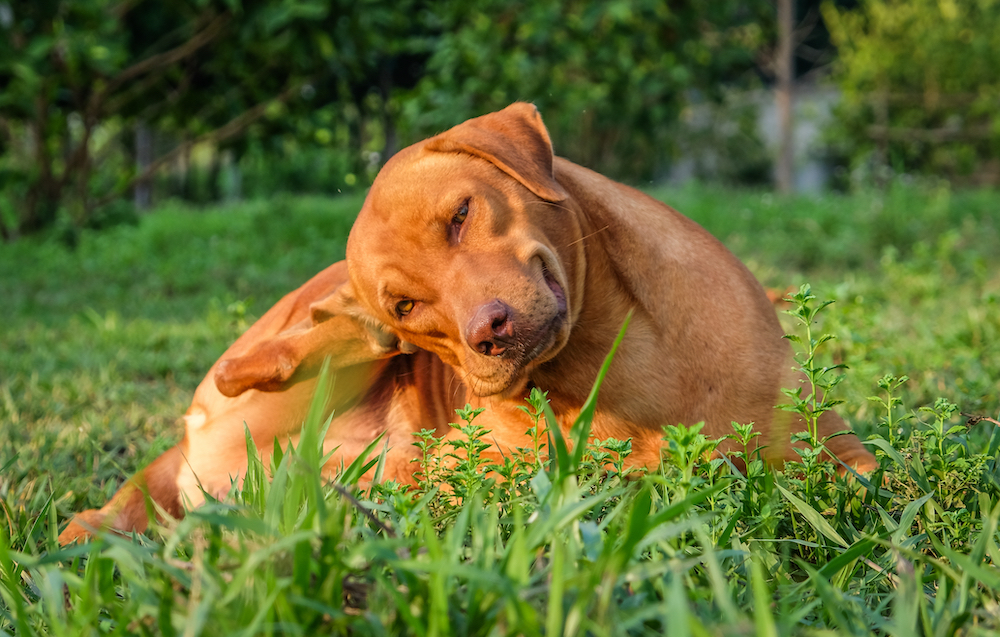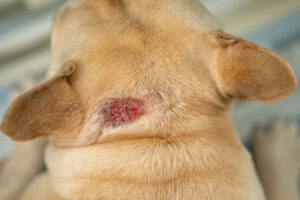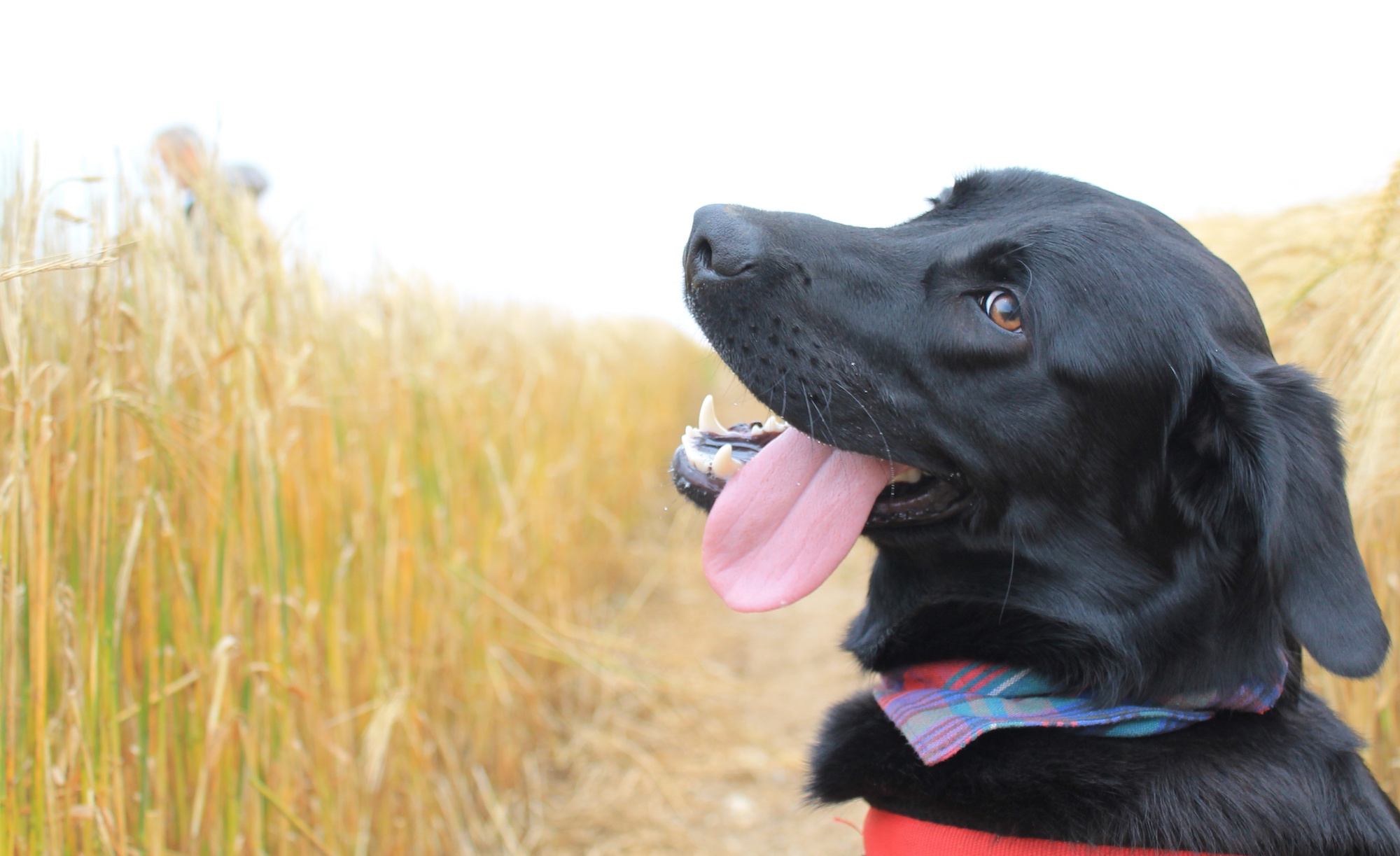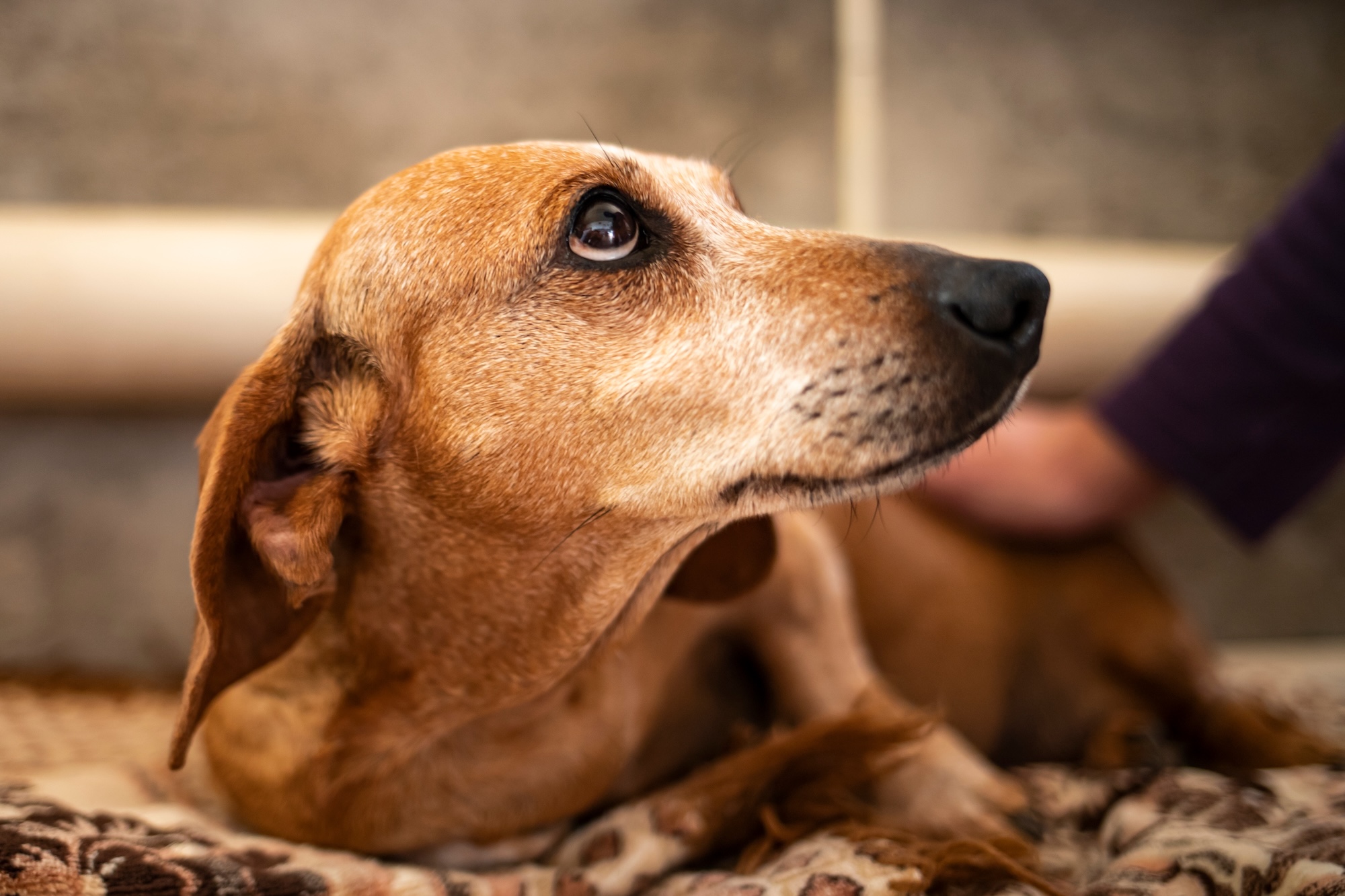No human wants to watch their dog endure the discomfort and pain caused by hot spots. But, with a little knowledge and a veterinarian’s guidance, it’s often easy to treat these skin irritations.
What are hot spots?
Hot spots, also known by the more official-sounding name “acute moist dermatitis,” are irritated, inflamed areas on your dog’s skin. They tend to be wet, red, and warm, and may bleed or ooze fluids. They can be painful. At first, the hot spots might cover just a small area—but then spread and get worse. Your dog may lose hair around the inflamed skin. They can start for all sorts of reasons, beginning as itchy skin from allergies, scratches from accidents or fights, bites, or stings. Once a dog scratches, licks, or chews at the spot, it can grow and become infected with bacteria or fungus. Hot spots can also hide under fur—if an area looks wet or matted, there may be an infection or hot spot beneath it.

How do you treat hot spots?
If your dog has hot spots, you should attend to them as soon as you can. Doing so, and keeping your dog’s skin clean, can help them feel comfortable again sooner and prevent complications from worsening infections. Consult with your vet about specifics so that you can weigh the pros and cons of each treatment option together.
If your dog has hot spots, a vet will probably trim around the area and clean the skin using antiseptic, possibly washing it with shampoo. If you wash your dog at home, be sure to use a vet-recommended cleanser, and rinse it all off with water.
Depending on the severity of the hot spots and how they’re impacting your dog, a vet might prescribe medicated shampoo, steroids to reduce inflammation, an anti-itch medication, or antibiotics to treat infections. They could administer these medications in their office or send you home with some along with instructions about how and when to use them.
An Elizabethan collar, sometimes just called a “cone,” can help stop a dog from chewing or licking the spots. Without such an obstruction, dogs may have difficulty resisting the urge to do so.
 How do you prevent hot spots?
How do you prevent hot spots?
While treatment usually clears up hot spots, it’s common for them to pop up again and again. However, there are steps you can take to improve your dog’s odds of healthy skin in the long run.
If the hotspots are appearing on the paws, try washing/wiping the area each time you come in from walks. It can help cut down on irritants from the grass from sticking to toes and causing further issues.
Leaving your dog wet can increase the chance of hot spots—so one simple way to reduce their risk of developing the condition is to safely dry them off after swimming, baths, or going out in the rain.
Dogs with skin folds are more prone to develop hot spots, so take extra care if your dog is a bulldog or similar breed—the area near the tail is a common trouble spot.
Because various root issues can lead to hot spots, paying attention to your dog’s general health will help. Dermatitis and parasites are among the culprits that can spur this condition. Good flea and tick prevention can ward off bites that, in addition to the other problems they may cause, could lead to scratching or licking.
You should also keep your dog clean and well groomed. This doesn’t mean constant bathing—natural oils on dogs’ skin and fur are an asset to their health—but keep their coats free of matting and knots, and clean them when they get dirty. When you do bathe your dog, dry them thoroughly.

Nutrition, too, can be a factor—food allergies can cause itchy areas that dogs may lick, chew, or scratch, and nutrients like Omega-3 fatty acids can help protect their coat and skin.
Joint issues, ear infections, or anything else that causes your dog discomfort can also lead them to lick or chew an irritated spot. Basically, be on the lookout for anything that makes your dog scratch.
Dogs may scratch and lick themselves out of boredom, so exercise and mental enrichment may also be of use in avoiding hot spots. And, in any case, a well-exercised dog with lots of challenging, fun tasks to think about is also likely to be a happier dog.
Pet health is an important topic. That’s why The Farmer’s Dog editorial team carefully vets and reviews every piece of content we publish. We deliver evidence-based advice and medically reviewed facts that focus on pet nutrition, health, and well-being. The mission of this site is to help people provide the best care possible for their dogs by publishing only trustworthy, accurate, and timely health information from a group of passionate experts.
 How do you prevent hot spots?
How do you prevent hot spots?



